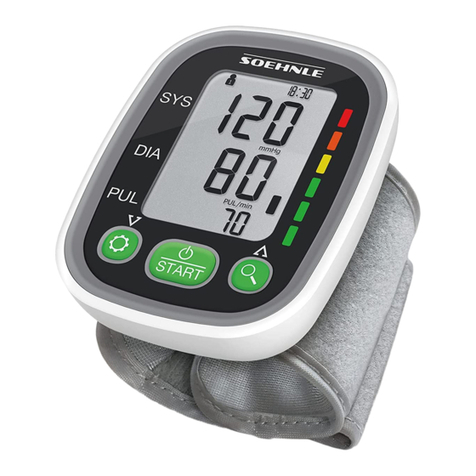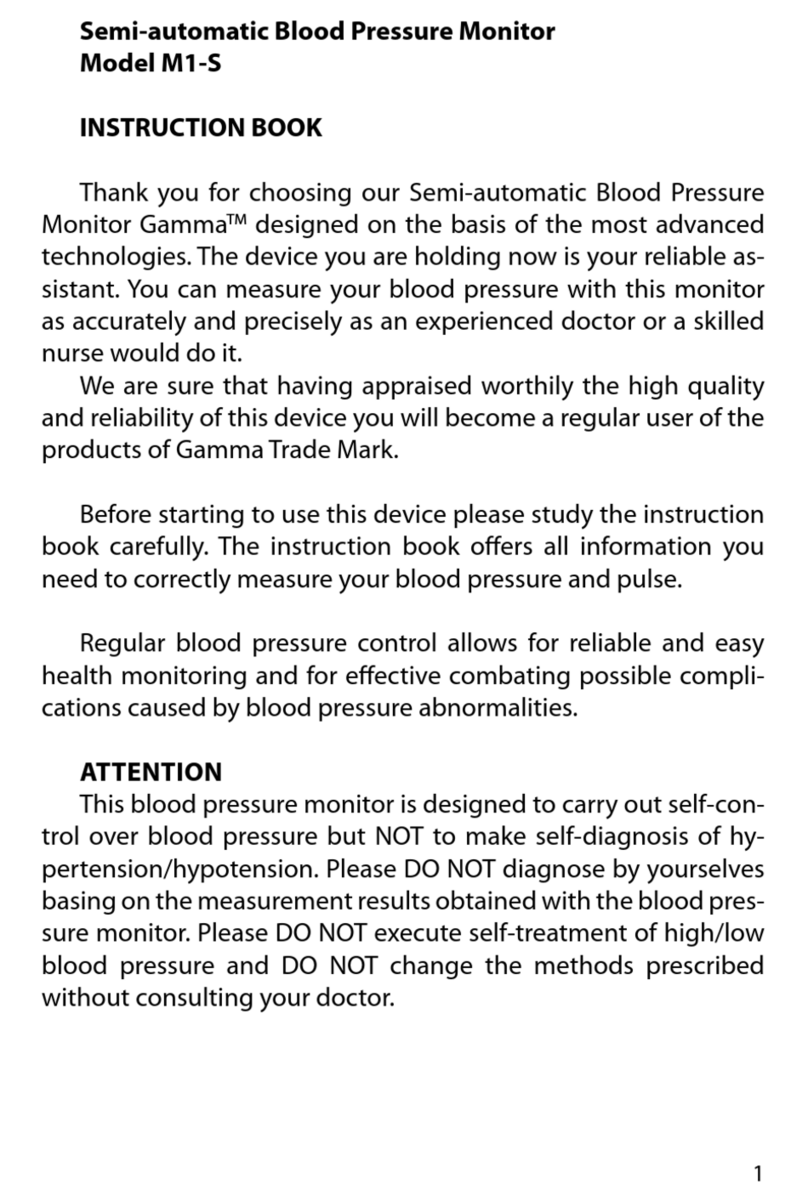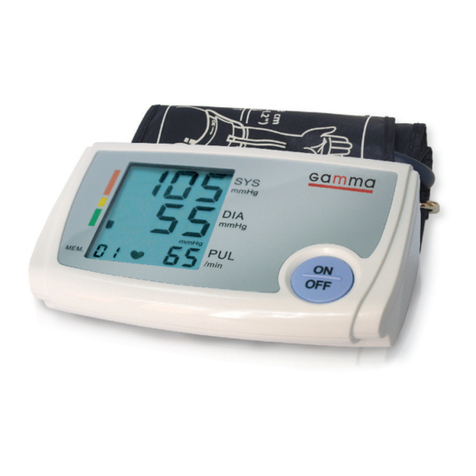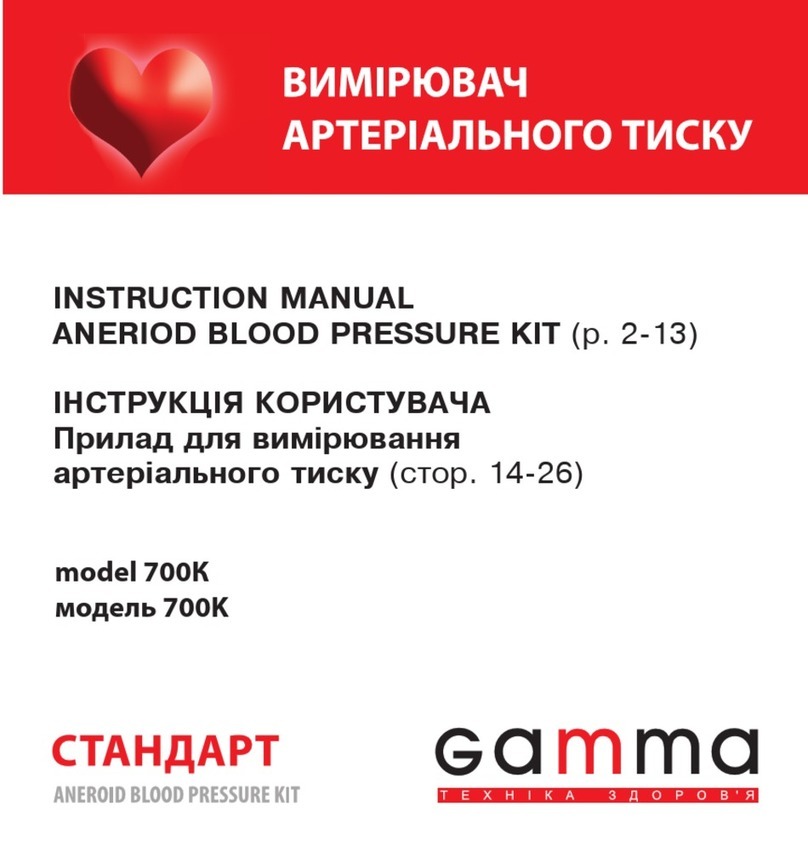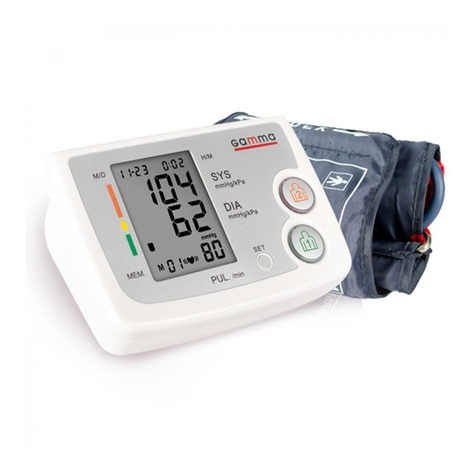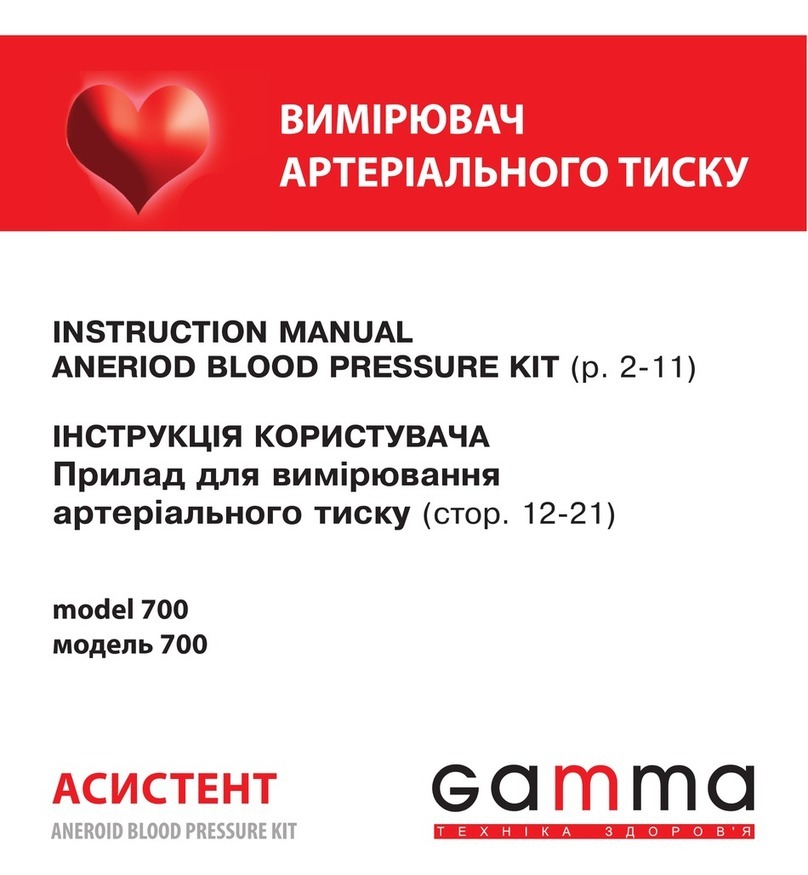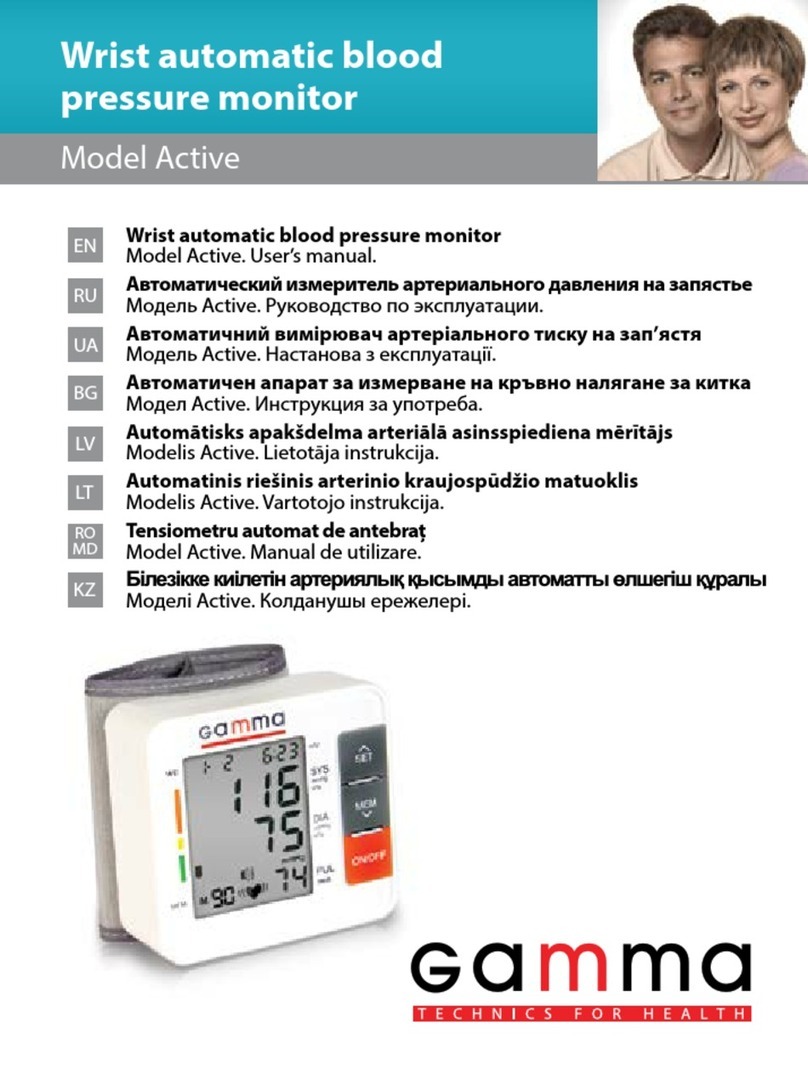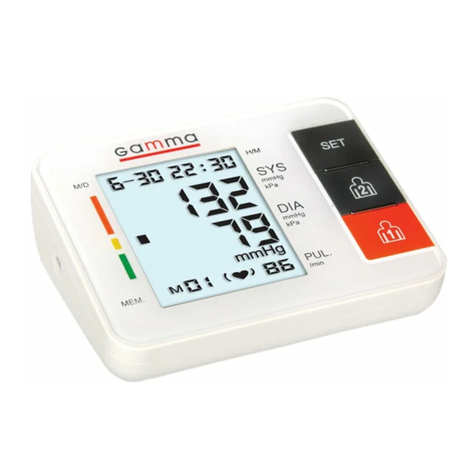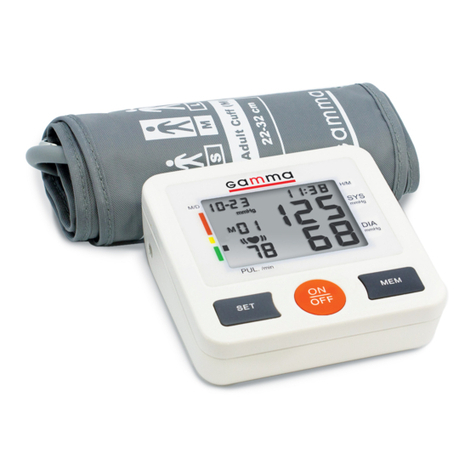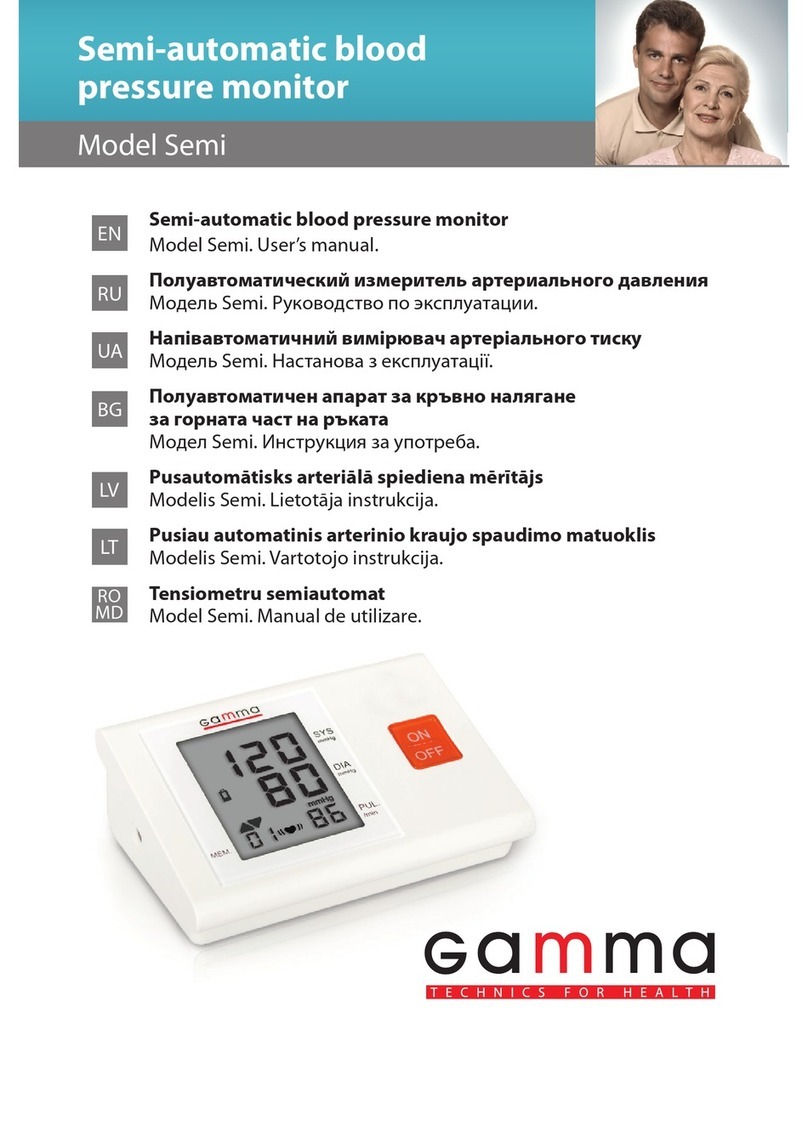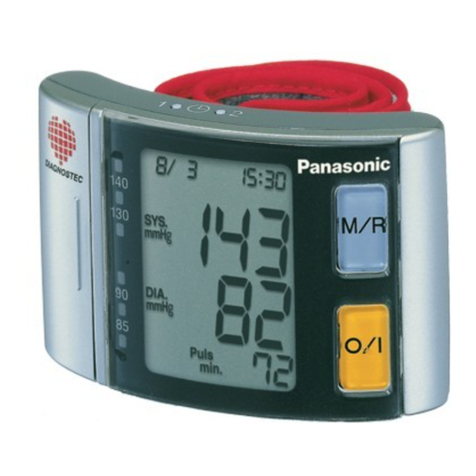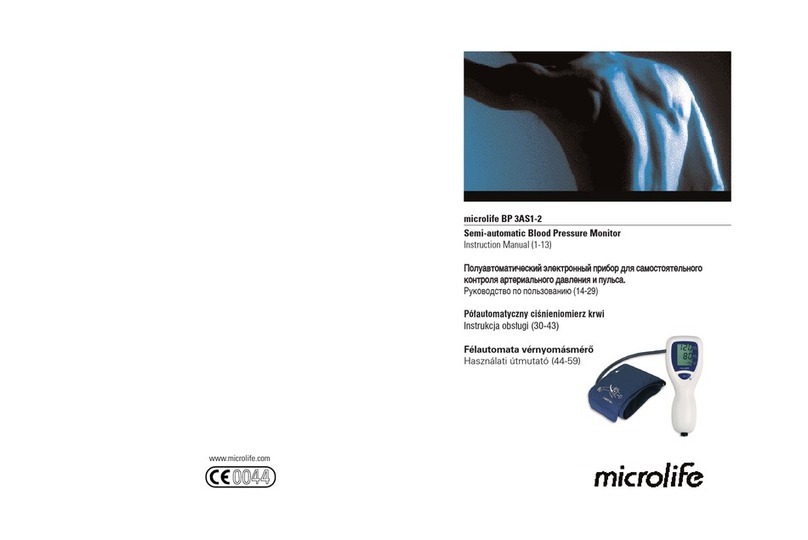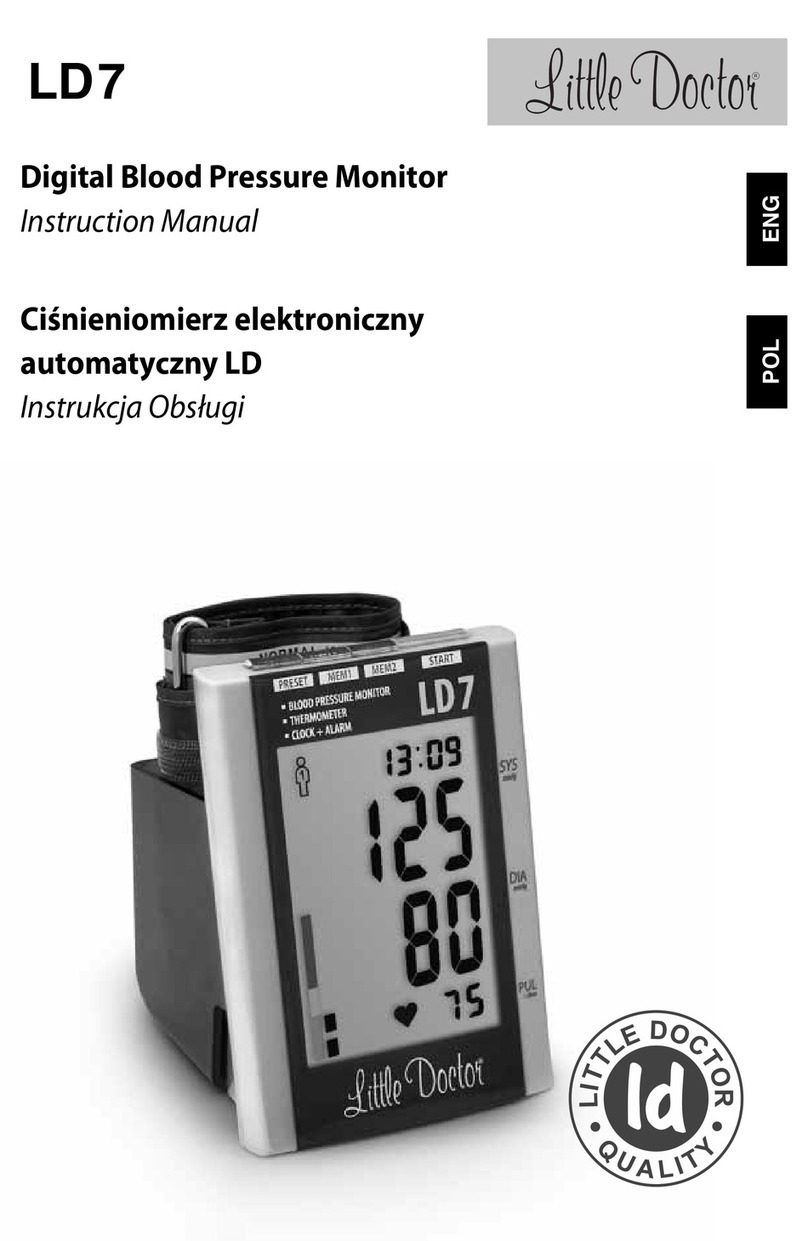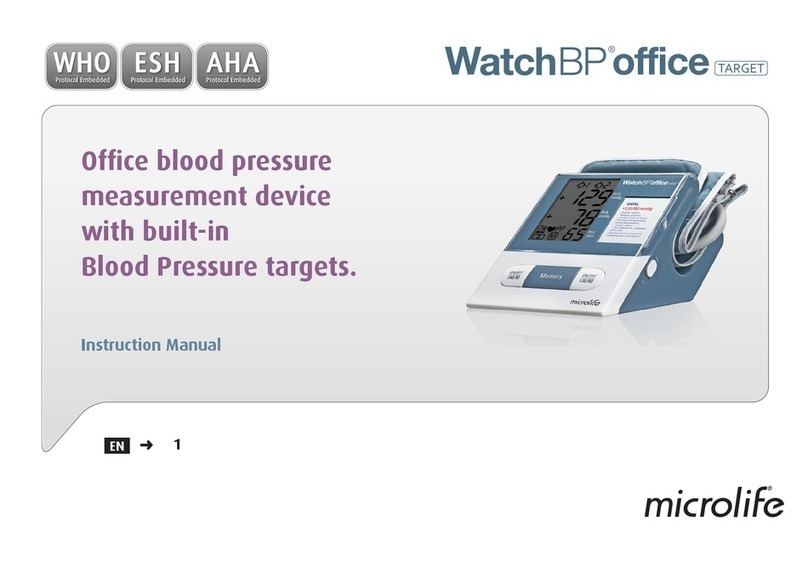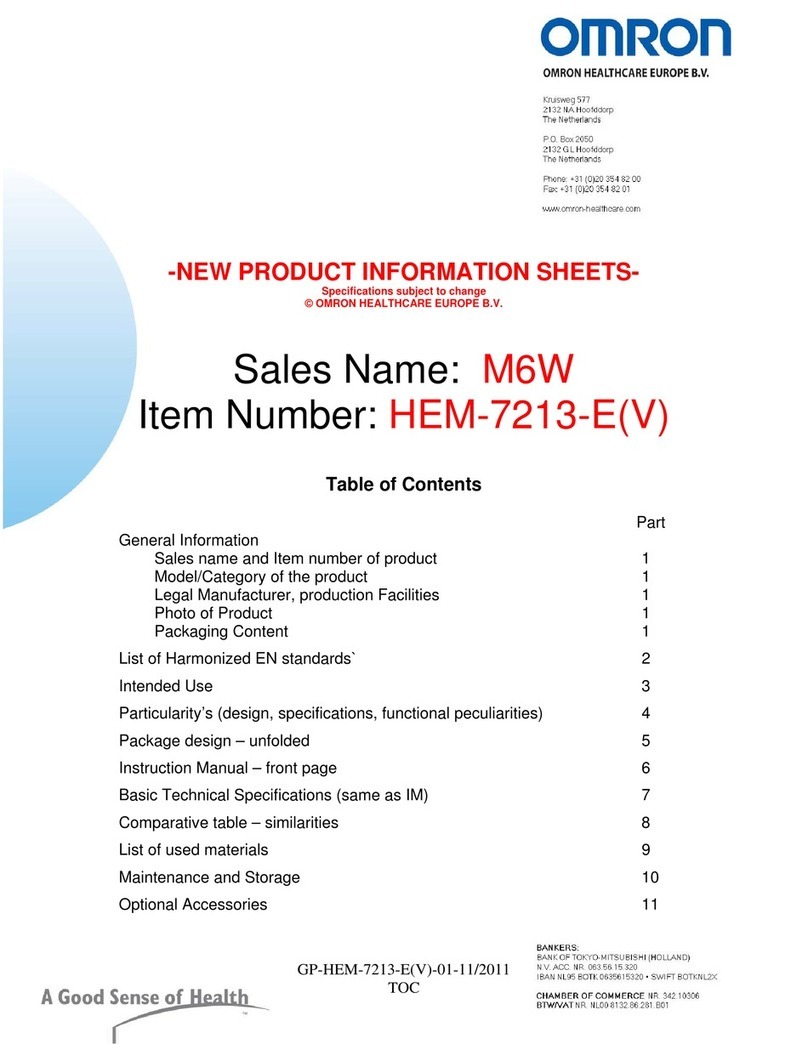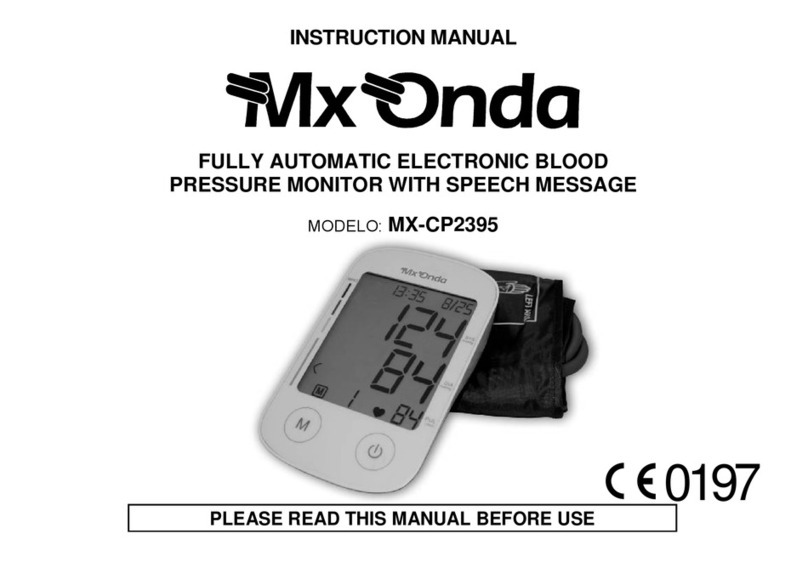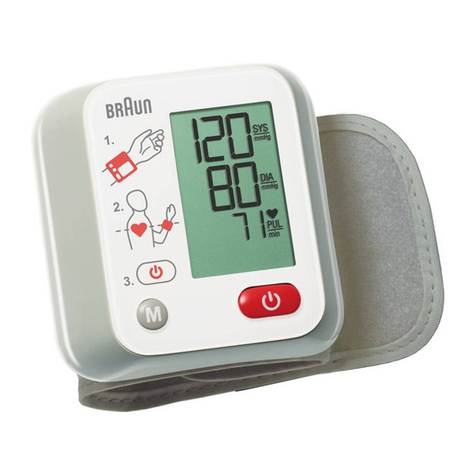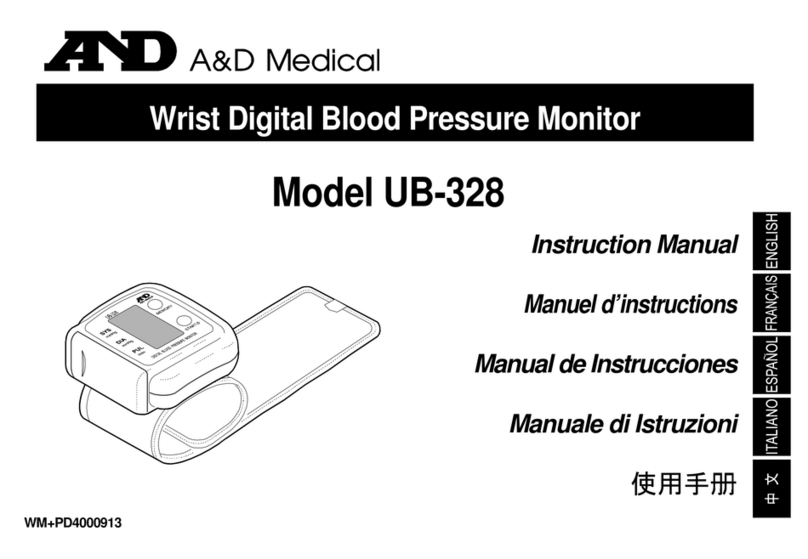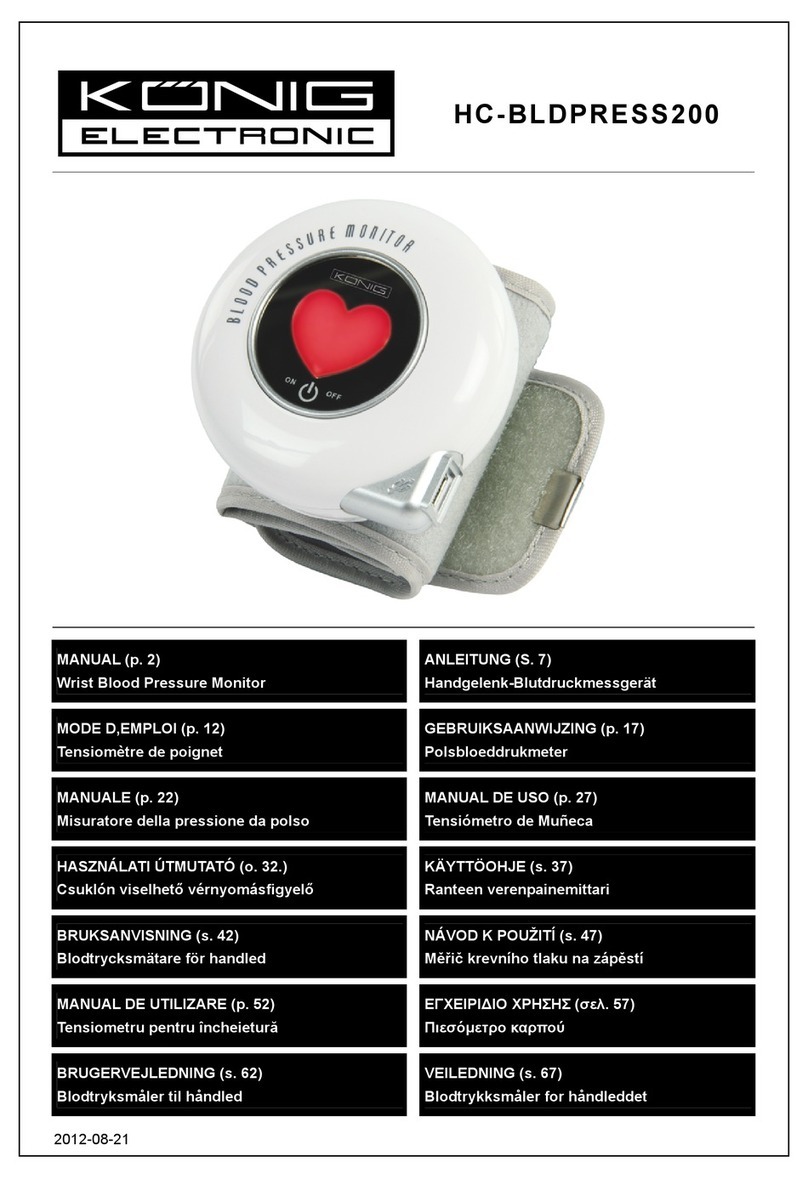
3.2. Measuring procedure
To carry out measurement
1. Press the START button.The built-in microproces-
sor begins to inate the cu. In the display, the increas-
ing cu pressure is continually displayed.
2. After automatically reaching an individual pres-
sure, the pump stops and the pressure slowly falls. The
cu pressure is displayed during the measurement.
When the device has detected your pulse, the heart
symbol in the display begins to blink and a beep tone is
audible for every pulse beat.
3.3. Reading measurement results
When the measurement has been con-
cluded, a long beep tone sounds. The meas-
ured systolic and diastolic blood pressure
values, as well as the pulse are now displayed.
The appearance of this symbol signi-
es that an irregular heartbeat was detected.
This indicator is only a caution. It is important that you be relaxed,
remain still and do not talk during measurements. NOTE: We recommend
contacting your physician if you see this indicator frequently.
Note
To prolong the batteries’life the device switches o automatically if no
button is pressed for 1 minute. Otherwise you can switch it o by pressing
the START button.
3.4. Discontinuing a measurement
If it is necessary to interrupt a blood pressure measurement for any
reason the START button can be pressed at any time. The device then im-
mediately lowers the cu pressure automatically.
3.5. Irregular Heartbeat Detector
This function indicates allorhythmic heartbeating. If the symbol of IHD
appears on the display that means that certain abnormality in heart beat
frequency was detected during the measurement. In this case, the result
SYS
blood
pressure
DIA
blood
pressure
Pulse


